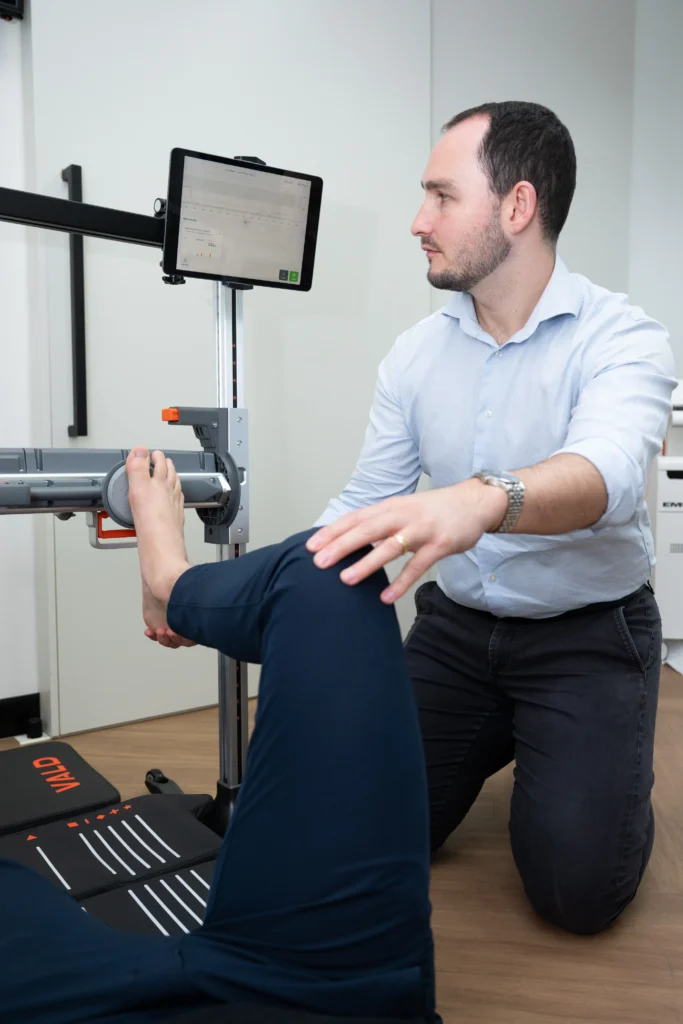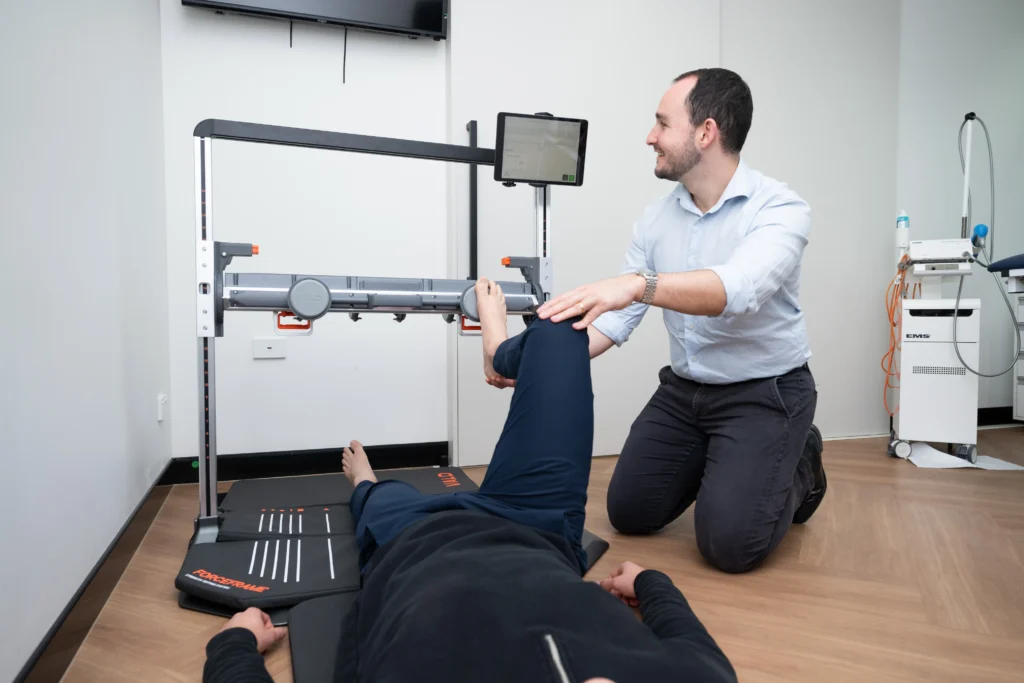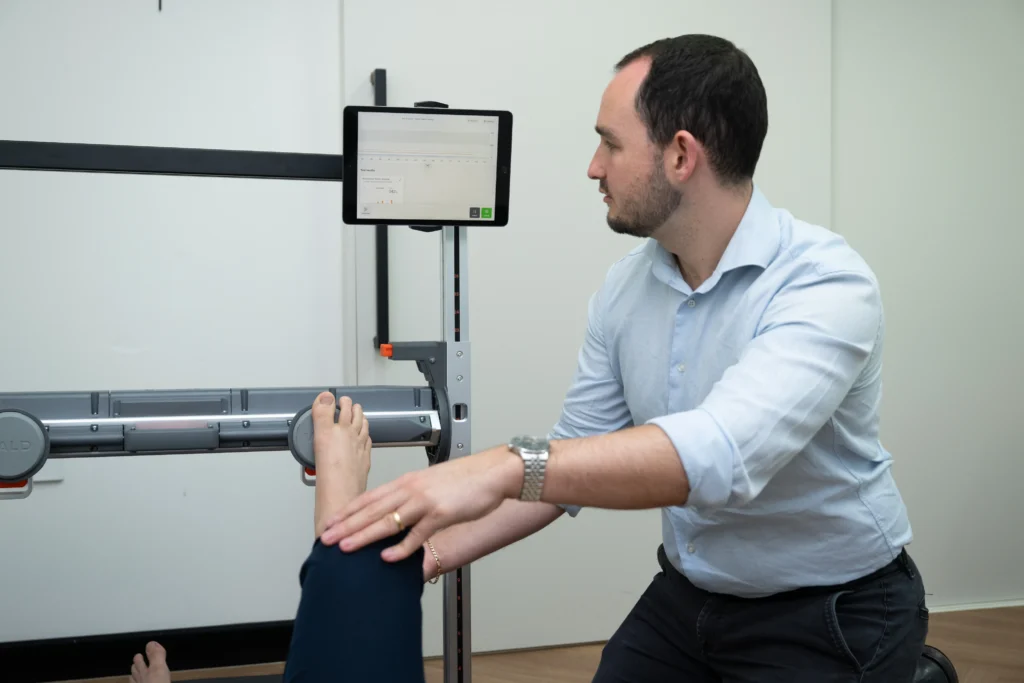Sports podiatry focuses on diagnosing, treating, and preventing foot and lower limb injuries related to physical activity as well as assessing posture and gait. Whether you’re a casual runner or a professional athlete, at PodMed Podiatry we can help you stay active and pain-free. We have two rooms set up with equipment for full biomechanical assessments, including treadmills with video gait analysis.
Podiatry therapy can help treat a range of different conditions and complaints including joint pain/restriction, arthritis, tightness, tendinopathies, fasciopathies, ankle pain, walking instability, and balance. It is also extremely effective for people wanting to boost their performance, whether involved in elite or recreational sports.
Your Podiatrist can help you with a range of concerns, including:
- Treatment of sports injuries
- Orthotic therapy
- Biomechanical and Postural assessment
- Strength testing
- Video gait analysis
- Footwear advice
- Dry needling
- Shockwave Therapy


Some common conditions treated at PodMed:
Plantar Fasciitis: Characterized by inflammation of the plantar fascia, a thick band of tissue that runs along the bottom of your foot, connecting your heel bone to your toes. This inflammation can cause heel or arch pain, especially after periods of rest or when you first start walking in the morning.
Achilles Tendonitis: Inflammation of the tendon connecting the calf muscles to the heel bone. The Achilles tendon is very important as it allows you to lift your heel when you walk or run. This is a common injury caused by overuse, a sudden increase in physical activity, poor foot posture and mechanics or inappropriate footwear.
Symptoms of Achilles tendonitis include pain in the back of the heel, and difficulty walking, and you may also notice swelling, tenderness, and warmth to the area.
Shin Splints: Medial tibial stress syndrome (also known as shin splints) presents as pain in the front of the lower leg along the shin bone sometimes accompanied by swelling. Most commonly caused by inflammation of the sheath surrounding the shin bone. The pain and irritation results from overloading the shinbone and the connective tissue that attach your muscles to the bone. Common causes can be running downhill, sports that involve lots of stopping and starting, tight calf and hamstring muscles and poor footwear.
Ankle Sprains: Injuries to the ligaments around the ankle joint. Occurs when the ankle is twisted or rolled beyond its normal range of motion. Symptoms of an ankle sprain can include; pain (especially when weight-bearing), swelling and bruising around the ankle, tenderness to touch, feeling of instability at the ankle joint.
Stress Fractures: Small cracks in bones due to repetitive stress. Symptoms include pain that worsens during activity and improves with rest, tenderness to touch, and sometimes swelling or bruising. The pain can be dull or sharp and may be present even at night.
Morton’s Neuroma: Occurs when there is nerve irritation and swelling between the metatarsal heads. Symptoms of Morton’s neuroma include pain in the forefoot, often localized to the 3rd and 4th area of the forefoot. Sometimes people report the sensation of ‘walking on a pebble’, radiating and or shooting pain up the foot, and/or numbness/tingling in the forefoot and toes.
Bunions and Hammertoes: Foot deformities that can cause pain due to increased pressure points or reduced range of movement through joints.
A range of different techniques are used to optimize the function of these important foot and leg structures. These include mobilization, manipulation, massage, dry needling, trigger point therapy, stretching, muscle activation, and strength/balance training.
